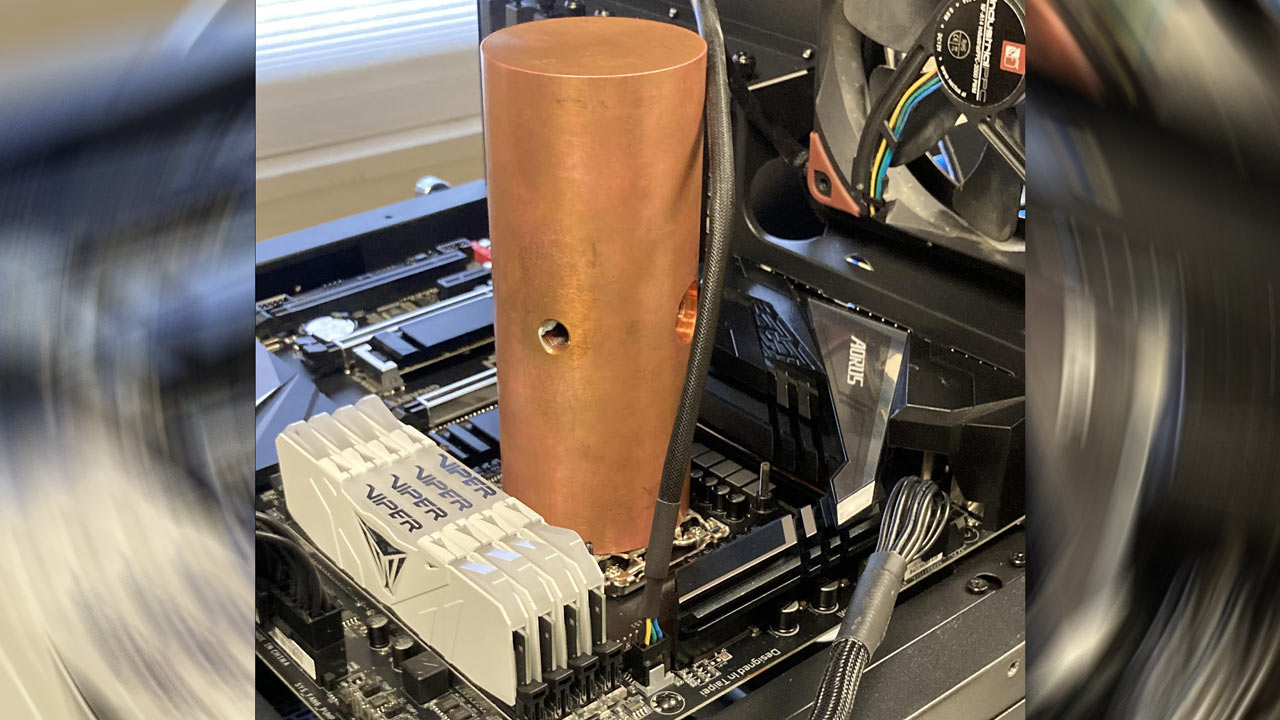
DIYer Passive Cools Core i9 with 8-Pound Copper Block
-
makes no sense since the surface area by size and weight is tiny
would be much better and smaller if he just stacked a few old copper zalman heatsinks
For a DIY “what if”, it makes perfect sense.
This is a “I have this big block of copper. Let’s try it, see what happens” type of thing.
-
For a DIY “what if”, it makes perfect sense.
This is a “I have this big block of copper. Let’s try it, see what happens” type of thing.
I have this big cylindrical chunk of conductive material…let’s try and balance it on a $600 CPU that is very susceptible to electric conductivity, without any protection!
(Yeah the CPU is protected by the heat spreader, but the rest of the system isn’t, I’m just making a point )
-
I have this big cylindrical chunk of conductive material…let’s try and balance it on a $600 CPU that is very susceptible to electric conductivity, without any protection!
(Yeah the CPU is protected by the heat spreader, but the rest of the system isn’t, I’m just making a point )
There’s that too.
But, for running for an hour or so, eh…lets try it.
Also, if it fell over, the CPU probably wouldn’t be damaged. The motherboard, however…;)
-
The specific heat of copper is only 0.38J/gram vs 4.17/gram for water. He’d get much better results by hollowing out the middle (maybe leave a 1″ cone at the bottom to increase copper-water surface area a bit, taper the wall thickness from 2mm at the open end to 1cm at the base, leave 5mm at the base plate for heat-spreading) and filling it with water. Or go one step further: fill the pile 2/3 of the way with water, seal the open end and vacuum it down to 4kPa (partial pressure of water at 20C) to make it into a huge heat pipe.
That way, he’d be able to run the CPU ~10X longer between bursts. Though it’ll also take 10X as long for the water to cool back down.


would be much better and smaller if he just stacked a few old copper zalman heatsinks
Reply